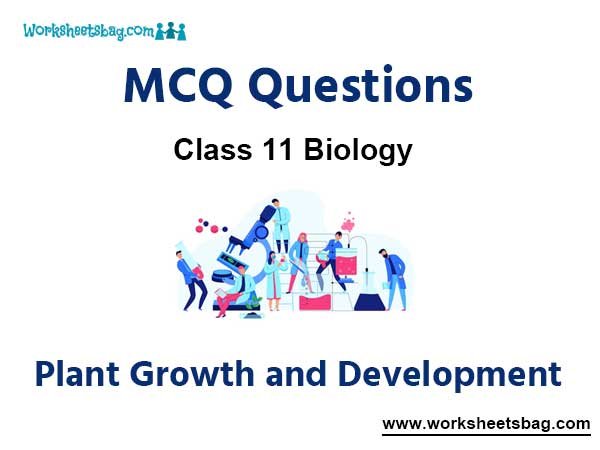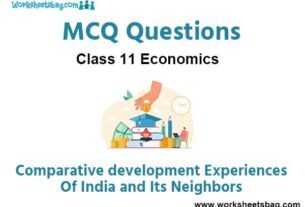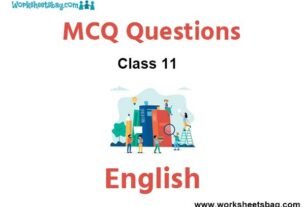Please refer to Plant Growth and Development MCQ Questions Class 11 Biology below. These MCQ questions for Class 11 Biology with answers have been designed as per the latest NCERT, CBSE books, and syllabus issued for the current academic year. These objective questions for Plant Growth and Development will help you to prepare for the exams and get more marks.
Plant Growth and Development MCQ Questions Class 11 Biology
Please see solved MCQ Questions for Plant Growth and Development in Class 11 Biology. All questions and answers have been prepared by expert faculty of standard 11 based on the latest examination guidelines.
MCQ Questions Class 11 Biology Plant Growth and Development
Question- Effect of low temperature which shortens vegetative period and hastens flowering is called _______.
(a) photoperiodism
(b) transpiration
(c) vernalization
(d) photolysis
Answer
C
Question- Which of the following statements on phytohormones & their action are correct?
(i) Cytokinins specially help in delaying senescence.
(ii) Auxins are involved in regulating apical dominance.
(iii) Ethylene is specially useful in enhancing seed germination.
(iv) Gibberellins are responsible for immature falling of leaves.
(a) (i) and (iii) only
(b) (i) and (iv) only
(c) (i) and (ii) only
(d) (ii) and (iii) only
Answer
C
Question- The method that renders the seed coat permeable to water so that embryo expansion is not physically retarded is called
(a) vernalization
(b) stratification
(c) denudation
(d) scarification
Answer
D
Question- In arithmetic growth rate, when length of the organ is plotted against time, the nature of graph curve will be —
(a) linear
(b) sigmoidal
(c) parabolic
(d) hyperbolic
Answer
A
Question- Which one of the following pairs is incorrectly matched?
(a) Adenine derivative – Kinetin
(b) Carotenoid derivative – ABA
(c) Terpenes – IAA
(d) Indole compounds – IBA
Answer
C
Question- In which of the following process, the cell loose theirprotoplasm to form tracheary element?
(a) Dedifferentiation
(b) Redifferentiation
(c) Differentiation
(d) Plasticity
Answer
C
Question- Seed dormancy
(a) is the temporal delay to the process of germination.
(b) is the permanent delay to the process of germination.
(c) minimizes seedling survival by preventing germination.
(d) occurs due to the presence of growth inhibitors only.
Answer
A
Question- Which of the following hormone closes stomata in response to water stress?
(a) IAA
(b) ABA
(c) NAA
(d) GA3
Answer
B
Question- The hormones which was first isolated from human urine is.
(a) indole-3-acetic acid
(b) gibberellin
(c) ethylene
(d) kinetin
Answer
A
Question- Which of the following is not an influence of auxins?
(a) Apical dominance
(b) Parthenocarpy
(c) Phototropism
(d) Fruit ripening
Answer
D
Question- Auxin herbicide is —
(a) NAA
(b) IAA
(c) 2, 4-D
(d) IBA
Answer
C
Question- Which of the following statement is correct regarding ethylene?
(a) It delayes senescence.
(b) It decreases the respiration rate during fruit ripening.
(c) It breaks seed and bud dormancy.
(d) It inhibits flowering in mango.
Answer
C
Question- Dwarfness can be controlled by treating the plant with —
(a) cytokinin
(b) gibberellic acid
(c) auxin
(d) antigibberellin
Answer
B
Question- Which of the following hormone is concerned with climacteric respiration?
(a) Ethylene
(b) Auxin
(c) GA1
(d) Cytokinin
Answer
A
Question- Which one is the first Gibberellins to be discovered and remains the most intensively studied form?
(a) GA1
(b) GA2
(c) GA3
(d) GA0
Answer
C
Question- Which of the following is not a function of cytokinin?
(a) Promotes apical dominance.
(b) Promotes chloroplast development.
(c) Promotes movement of nutrients.
(d) Delay leaf senescence.
Answer
A
Question- The most abundant natural cytokinin that is isolated from corn kernels and coconut milk is —
(a) carotenoid derivative
(b) pyrimidine derivative
(c) inetin
(d) zeatin
Answer
D
Question- Which of the following synthetic phytohormone was discovered as a breakdown product of DNA?
(a) Kinetin
(b) 2, 4-D
(c) NAA
(d) Thidiazuron
Answer
A
Question- Highest concentration of cytokinin is found in
(a) area of continuous growth and meristematic region.
(b) meristematic region only.
(c) mature leaves.
(d) ripened fruit.
Answer
A
Question- Hormone responsible for bolting is —
(a) IAA
(b) kinetin
(c) ABA
(d) GA
Answer
D
Question- Senescence in plants can be promoted by applying.
(a) auxins
(b) cytokinins
(c) GA
(d) ethylene
Answer
D
Question- Read the following statements (i-iv) regarding “ethephon” and answer the question which follows them.
(i) Ethephon is sprayed in aqueous solution and is readily absorbed and transported within the plant.
(ii) It hastens fruit ripening in tomatoes and apples.
(iii) It can be used to induce fruit thinning in cotton, cherry and walnut.
(iv) It is used to promote female sex expression in cucumber and increase yield.
How many of the above statement(s) is/ are correct?
(a) One
(b) Two
(c) Three
(d) All
Answer
D
Question- Presence of which of the following compound accelerates abscission of flower and fruits?
(a) Acetaldehyde
(b) Ethephon
(c) Ascorbic acid
(d) Zeatin
Answer
B
Question- The ability of plant to follow different pathways and produce different structures in response to environment and phases of life is termed as —
(a) elasticity
(b) growth efficiency
(c) plasticity
(d) heterophylly
Answer
C
Question- Gibberellin was first extracted from —
(a) Gibberella fujikuroi
(b) algae
(c) bacteria
(d) roots of higher plants
Answer
A
Question- ABA is antagonistic to
(a) GA
(b) cytokinin
(c) ethylene
(d) auxin
Answer
A
Question- Which one of the following is chemically identical to ABA?
(a) Indole-3-acetic acid
(b) Kinetin
(c) Dormin
(d) 2, 4-D
Answer
C
Question- Photoperiodism is
(a) recurrence of day and night.
(b) effect of day length on flowering of a plant.
(c) flowering plant.
(d) growth curvature in response to light.
Answer
B
Question- Gaseous hormone is
(a) ethylene
(b) ethane
(c) acetylene
(d) benzaldehyde
Answer
A
Question- The essential distinction between long-day and shortday plants is that flowering in long day plants is promoted only when the day length exceeds a certain duration, called the ______________.
(a) critical day length
(b) short-long day length
(c) long-short day length
(d) photoperiod
Answer
A
Question- Match the growth regulators given in column I with their action given in column II and choose the correct combination from the options given below.
Column-I Column-II
(Growth Regulator) (Action)
A. Abscisic acid I. Delays leaf senescence
B. Ethylene II. Inhibits seed germination
C. Cytokinin III. Herbicide
D. Auxin IV. Hastens fruit ripening
(a) A-II; B-IV; C-I; D-III.
(b) A-I; B-II; C-III; D-IV
(c) A-II; B-III; C-IV; D-I
(d) A-II; B-I; C-III; D-IV
Answer
A
Question- Plants requiring exposure to light for less than critical period in order to flower are called ________.
(a) long day plants.
(b) day neutral plants.
(c) intermediate day plants.
(d) short day plants.
Answer
D
Question-Germination takes place when the
(a) previously dormant embryo is activated.
(b) cotyledons emerge above the ground.
(c) hypocotyl or epicotyl emerges above the ground.
(d) vascular tissues begin to transport fluids.
Answer
B
Question- Day neutral plants relate to
(a) loss of activity during day time.
(b) flowering in all possible photoperiods.
(c) overactive during day time.
(d) no flowering in any photoperiods.
Answer
A
Question- The measure of the ability of the plant to produce new plant material is referred as —
(a) efficiency index
(b) absolute growth rate
(c) arithmetic growth
(d) linear growth
Answer
A
Question- Which of the following statement is not the characteristic of growth of an organism?
(a) It is an irreversible permanent increase in size of an organ / its part / an individual cell.
(b) It is accompanied by metabolic processes.
(c) It is quantitative and intrinsic.
(d) None of the above
Answer
D
Question- Growth is accompanied by
(a) anabolic process and energy
(b) catabolic process which occurs at the expense of energy.
(c) metabolic processes which occur at the expense of energy
(d) energy only
Answer
C
Question- Lead abscission, fruit fall, bud dormancy occurs by which of the following phytohormone?
(a) Auxin
(b) Cytokinins
(c) Gibberellins
(d) Abscisic acid
Answer
D
Question- Which one of the following statement regarding auxin is correct?
(a) IAA and IBA are natural but NAA, 2 4-D and 2, 4, 5-T are synthetic auxins.
(b) IAA and NAA are natural but IBA, 2, 4, 5-T and 2, 4-D are synthetic auxins.
(c) NAA and 2, 4, 5-T are natural but IAA, IBA and 2, 4-D are synthetic auxins.
(d) IAA, NAA, IAB, 2, 4-D and 2, 4, 5-T are syntheticauxins.
Answer
A
Question- Match the plant hormones listed in column-I with their major role listed in column-II. Select the correct option from the codes given below.
Column-I Column-II
A. Auxin I. Fruit ripening
B. Cytokinins II. Apical dominance
C. Abscisic acid III. Antagonistic to GAs
D. Ethylene IV. Stomatal opening and closing
V. Growth of lateral buds
(a) A – IV; B – V; C – III; D – I
(b) A – II; B – IV; C – III; D – 1
(c) A – II; B – V; C – III; D – I
(d) A – III; IV B – V; C – II; D – I
Answer
C
Question- Which of the following is an incorrect statement?
(a) Long day plants flower if the night length is shorter than a critical period.
(b) Short-day plants flower when night length exceeds a critical dark period.
(c) Day-neutral plants are insensitive to day length.
(d) The process of flowering does not occur in dayneutral plants.
Answer
D
Question- Identify the correct and incorrect statements from the following.
(i) 17,500 new cells are produced per hour by a single maize root apical meristem.
(ii) With the help of length, growth of pollen tube is measured.
(iii) The growth of the leaf is measured in terms of volume.
(iv) Cells in a watermelon may increase in size by upto 3,50,000 times.
(a) (i), (ii), (iii) are correct and (iv) is incorrect.
(b) (i), (ii), (iv) are correct and (iii) is incorrect.
(c) (ii), (iii) are correct and (i), (iv) are incorrect.
(d) (i), (iv) are correct and (ii), (iii) are incorrect.
Answer
B
Question- Which of the following statements are correct ?
(i) Cytokinins promote senescence.
(ii) Auxins control apical dominance.
(iii) Gibberellins promote shoot elongation.
(iv) Abscissic acid enables seeds to withstand desiccation.
(a) (i) and (ii) only
(b) (ii) and (iii) only
(c) (i) and (iii) only
(d) (ii), (iii) and (iv) only
Answer
D
Question- Refer the following statements.
(i) Promotes flowering in pineapple.
(ii) Used to prepare weed free lawn.
(iii) Promotes the abscission of older mature leaves and fruits.
The above functions are carried out by
(a) GA
(b) C2H4
(c) ABA
(d) Auxin
Answer
D
Question- Match the plant hormones given in column I with their function/other name given in column II and choose the correct combination.
Column -I Column -II
(Plant hormone) (Function/other name)
A. Zeatin I. Flowering hormone
B. Florigen II. Synthetic auxin
C. IBA III. Cytokinin
D. NAA IV. Natural auxin
(a) A – III; B – IV; C – I; D – II
(b) A – II; B – I; C – IV; D – III
(c) A – I; B – II; C – III; D – IV
(d) A – III; B – I; C – IV; D – II
Answer
D
Question- Which of the following statement is not correct about the conditions for plant growth?
(a) Oxygen helps in releasing metabolic energy essential for growth activities.
(b) Nutrients are required by plants for the synthesis of protoplasm and act as source of energy.
(c) Light and gravity affect certain stages of growth.
(d) Water oxidizes glucose to provide energy.
Answer
D
Question- Match the growth regulators given in column-I with the processes given in column-II and choose the correct combination.
Column-I Column-II
(Growth regulators) (Processes)
A Auxin I. Colouring test in lemon
B Gibberellin II. Cell division test in plants
C Cytokinin III. Avena curvature test
D Ethylene IV. Dwarf corn test
(a) A – III; B – IV; C – II; D – I
(b) A – I; B – IV; C – II; D – III
(c) A – IV; B – III; C – I; D – II
(d) A – II; B – I; C – IV; D – III
Answer
A
Question- The movement of plant and its parts in response to light is called
(a) photorespiration
(b) photosynthesis
(c) phototropism
(d) photophosphorylation
Answer
C
Question-Which one of the following pairs is not correctly matched?
(a) Abscisic acid — Stomatal closure
(b) Gibberellic acid — Leaf fall
(c) Cytokinin — Cell division
(d) IAA — Cell wall elongation
Answer
B
Question- Which of the following statement regarding vernalisation is correct?
(a) Vernalisation refers to the promotion of flowering by a period of low temperature.
(b) The spring variety of crops are normally planted in the spring and come to flower before the end of the growing season.
(c) It is not seen in biennial plants.
(d) Subjecting cold treatment to sugar beet will result in flowering.
Answer
C


